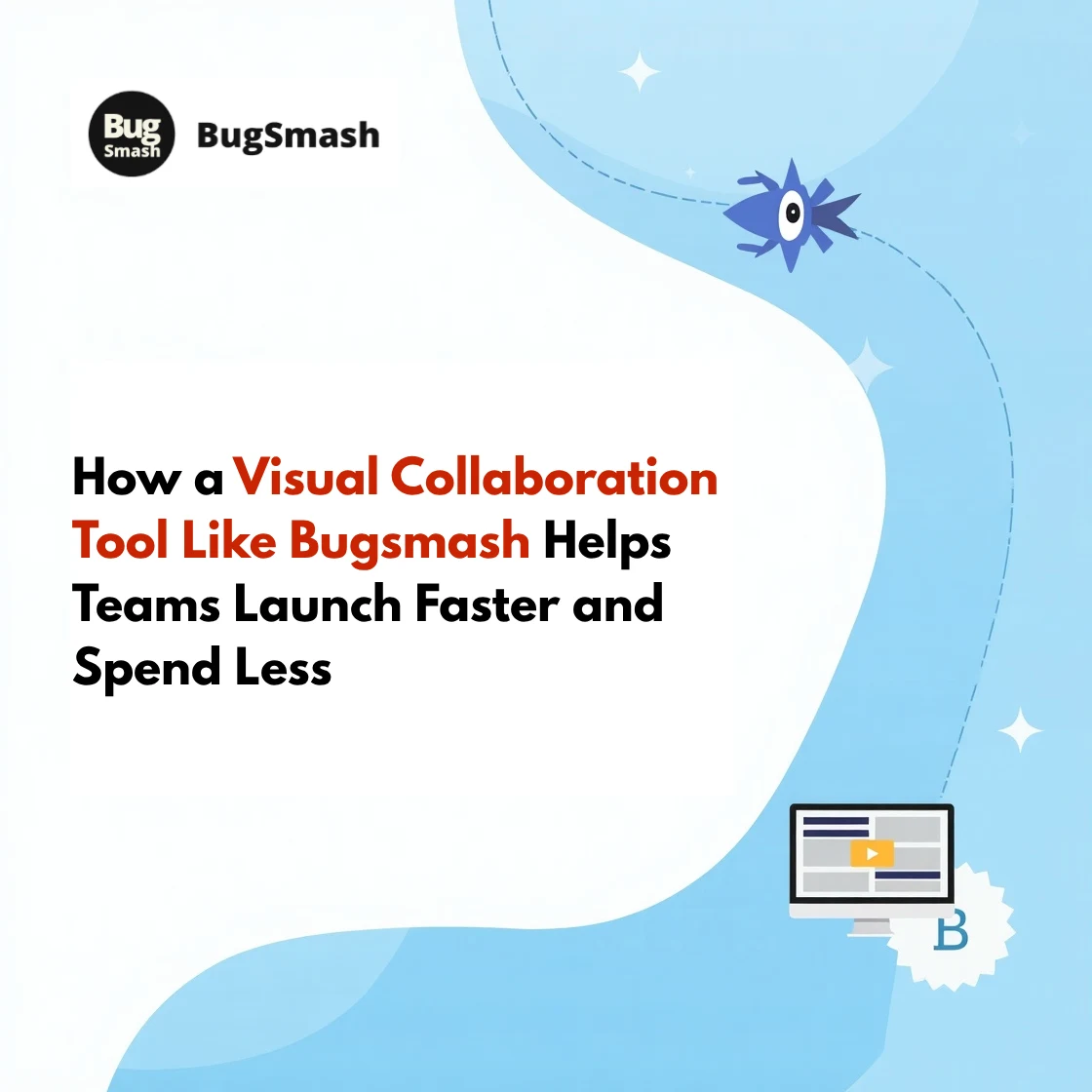In fast-moving product teams, miscommunication, delays, and endless feedback loops can destroy timelines—and budgets. That’s where a visual collaboration tool like BugSmash changes the game. By streamlining communication, centralizing feedback, and giving every stakeholder visibility, teams can move from idea to launch faster and with fewer costly missteps.
But how exactly does a tool like BugSmash do that? Let’s dig in.
What Is a Visual Collaboration Tool?
A visual collaboration tool is more than just a fancy feedback widget. It’s an interactive platform that lets designers, developers, marketers, and stakeholders comment directly on live visuals, prototypes, websites, or products.
Instead of long email threads or confusing screenshots, teams collaborate in real time—on the actual work. BugSmash, for instance, allows users to annotate designs, track feedback, and assign tasks—within the same interface.
Why Teams Waste Time (and Money) Without One
Let’s be blunt: most teams lose hours every week on back-and-forth clarification.
Here’s what usually happens:
- Feedback is vague or delivered too late.
- Designers don’t get the full context.
- Developers implement the wrong version.
- QA finds bugs that were already “fixed.”
- Projects get pushed. Again.
These inefficiencies lead to longer timelines, missed windows, and blown budgets. All of which could be prevented with clearer, visual-first communication.
How BugSmash Helps Teams Launch Faster
Here’s what BugSmash brings to the table when speed matters:
1. Contextual Feedback
Forget about vague Slack messages like “Can you change the color here?”
BugSmash lets users drop pins directly on visuals with comments, attachments, and task labels—so there’s zero ambiguity.
2. Real-Time Collaboration Across Departments
Designers, developers, marketers, and QA all work on the same version, with updates synced in real time. No version confusion. No duplicated efforts.
3. Workflow Automation
BugSmash integrates with tools like Jira, Trello, and Slack. That means feedback gets converted into actionable tasks automatically—saving hours of manual work.
4. Faster Approvals
Stakeholders can view progress and approve changes visually. No need to set up separate meetings or send long emails for sign-off.
How BugSmash Helps You Spend Less
Speed isn’t the only benefit. BugSmash helps reduce overall project costs in 3 major ways:
1. Fewer Rounds of Rework
By getting the right feedback early and in context, teams avoid multiple cycles of fixing the same issue. That saves billable hours—especially for agencies.
2. Reduced Communication Overhead
Fewer meetings. Fewer “quick calls.” Less confusion. More doing.
3. Consolidated Tech Stack
Instead of juggling five different tools for reviews, task management, approvals, and feedback, BugSmash does it all. That cuts software costs and training time.
See BugSmash in Action Across Teams
BugSmash vs Traditional Collaboration Methods
Here’s how BugSmash stacks up:
| Feature | Email/Chat | Shared Docs | BugSmash |
|---|---|---|---|
| Visual Feedback | ❌ | ⚠️ Limited | ✅ Yes |
| Real-Time Comments | ⚠️ Delayed | ⚠️ Sometimes | ✅ Yes |
| Task Assignment | ❌ | ❌ | ✅ Integrated |
| Version Control | ❌ | ⚠️ Manual | ✅ Automatic |
| Centralized Feedback | ❌ | ❌ | ✅ Yes |
| Integrations (Jira, Slack, etc.) | ❌ | ⚠️ Basic | ✅ Seamless |
Where BugSmash Fits Into Your Workflow
You don’t need to overhaul your current system. BugSmash works with:
- Designers using Figma or Sketch
- Developers using GitHub or Jira
- QA teams logging bugs in Trello
- PMs tracking tasks in Asana
- Marketers reviewing copy and creatives
It integrates, rather than replaces—reducing resistance during adoption.
FAQs About Visual Collaboration Tools
Q1: What makes BugSmash different from other visual collaboration tools?
BugSmash focuses on launch-readiness and cross-functional clarity. It’s designed for actual production teams—not just brainstorming sessions.
Q2: Can I use BugSmash with remote teams?
Absolutely. It’s built for async collaboration. Feedback, comments, and approvals are logged in one place for complete transparency.
Q3: Do I need a separate tool for developers?
No. BugSmash integrates directly with developer tools and helps create dev-friendly tickets from visual feedback.
Q4: Will it slow down my current workflow?
Nope. Most teams report saving 6–8 hours a week after switching, thanks to fewer clarifications and reduced rework.
Q5: Is BugSmash suitable for freelancers or only large teams?
It works for both. Whether you’re a solo designer or a 50-person agency, BugSmash scales with your needs.
Final Take: A Smarter Way to Collaborate
Speed and efficiency are no longer luxuries—they’re survival tactics. With tight deadlines and lean budgets, modern teams can’t afford inefficient communication.
A visual collaboration tool like BugSmash gives your team the edge it needs. By aligning feedback, reducing rework, and accelerating decisions, you don’t just launch faster—you launch smarter.
If you’re tired of slow reviews, missed context, and ballooning budgets, it’s time to make the switch.




